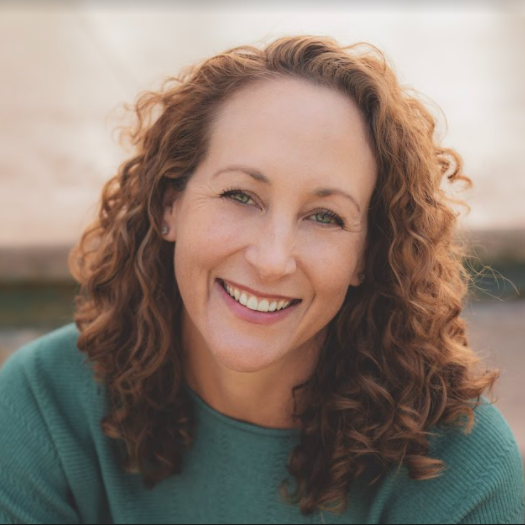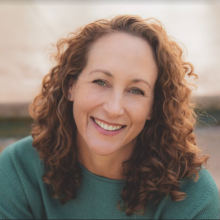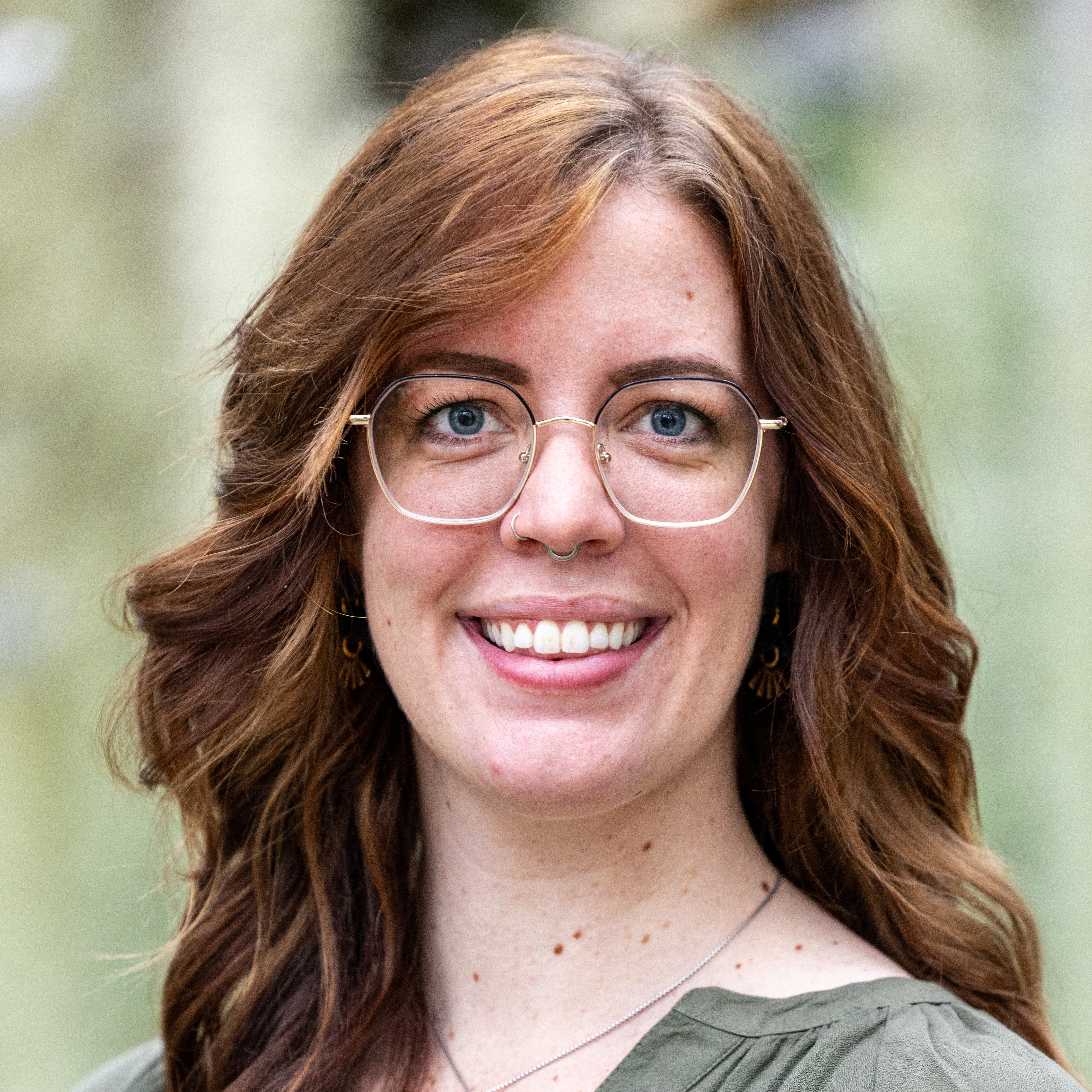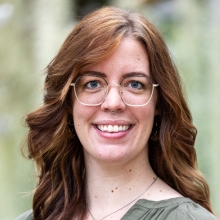The Diverse Landscape of Community-Based Justice Workers
 IAALS, the Institute for the Advancement of the American Legal System, has conceptualized regulatory models as consisting of four pathways to change: regulatory sandboxes, alternative business structures, allied legal professionals, and community-based justice worker models.(1) According to IAALS, a community-based justice worker model “involve[s] training and certifying individuals working at community-based organizations to offer legal advice and services in certain case types.” These models target low-income individuals and require modification of, exemption from, or waivers to unauthorized practice of law (UPL) restrictions.
IAALS, the Institute for the Advancement of the American Legal System, has conceptualized regulatory models as consisting of four pathways to change: regulatory sandboxes, alternative business structures, allied legal professionals, and community-based justice worker models.(1) According to IAALS, a community-based justice worker model “involve[s] training and certifying individuals working at community-based organizations to offer legal advice and services in certain case types.” These models target low-income individuals and require modification of, exemption from, or waivers to unauthorized practice of law (UPL) restrictions.
Currently, existing projects like these are authorized across the country through state supreme court administrative orders or the Utah regulatory sandbox.(2) As of February 2024, five states have community-based justice workers, all with varied training requirements, scope of service, and regulatory oversight. The diversity of the emerging community-based justice worker efforts demonstrates the value of early experimentation and iterative design, given the growing number of jurisdictions that now look to these states as models for various program design choices. This includes experimentation in scope of service, location of service, credentialing, eligibility for services, insurance, and supervision and mentoring. This rapidly growing area of the civil justice ecosystem has resulted in seven authorized programs in five jurisdictions in only three and a half years.(3)
In efforts to track and support the evolution and expansion of the community-based justice worker models, IAALS has created an online resource to provide information about these emerging regulatory models.(4) Our innovation lab—Innovation for Justice(5)—has been serving as a design hub for community-centered UPL reform efforts,(6) and a national organization known as Frontline Justice was founded in 2023 to amplify justice worker models around and across the country.(7)
Precursor to Community-Based Justice Worker Models: Legal Navigators and Administrative Representatives
Justice workers are not new—prior to regulatory reform, some jurisdictions have long hosted legal navigators, people who are not lawyers but assist self-represented litigants with their civil legal needs,(8) and many administrative proceedings permit representation by nonlawyer advocates. Both innovations were made possible without UPL reform. In 2019, Mary McClymont surveyed nonlawyer navigator programs in the U.S. who help self-represented litigants in state courts.(9) Her report covers 23 programs in more than 80 locations in the country.(10) These programs have design variations; consist of navigators from various backgrounds such as paid staff, students, or retirees; and “undertake a wide array of tasks on behalf of the SRLs such as helping them physically navigate the court; get practical information and referrals; or complete their court paperwork. Navigators also accompany SRLs to court to provide emotional support, help answer the judge’s factual questions, or aid in resolving a matter with opposing counsel.”(11)
In 2019, Alaska Legal Services Corporation (ALSC) leveraged the legal navigator movement—and the community health aid network existing in Alaska—to create the Community Justice Worker program. This program empowered justice workers in rural Alaska to provide legal help within the bounds of the existing UPL environment in Alaska.(12) Alaska’s Community Justice Workers were instrumental in helping many Alaskans receive the SNAP benefits that they were denied during the pandemic.(13)
As subsequent innovation has shown, the early success of Alaska’s Community Justice Workers in a legal navigator role helped the program evolve to add another community-based justice worker program with UPL carveout authorization to the U.S. civil justice ecosystem. With dozens of long-running legal navigator programs across the U.S., and as demonstrated by the efforts in Alaska, legal navigators are well positioned to upskill into more legal service capacity through UPL reform.
Legal Link is a powerful example of how legal navigators are operating in communities at the top of their skillset, while providing legal education and support within existing UPL regulatory environments. Legal Link provides legal first-aid training to community-based organizations to “identify legal issues, surface unmet legal needs, and access legal protections.”(14) Legal Link partners with over 50 trusted community-based organizations in the California Bay Area to “expand the legal ecosystem, promote participation in our legal system and to move the needle on poverty-related outcomes.”(15) Legal Link’s legal first aid model is currently being replicated in South Carolina and Oklahoma and provides community-based organizations across the U.S. with a useful framework for customizing their legal training to fit the needs of the communities they serve. As an added layer of legal support(16), Legal Link is also building out its first issue-specific community justice worker program, this one focused on consumer debt, which will launch in the coming year.(17)
Federal agencies have a well-established practice of permitting nonlawyer representation in administrative proceedings.(18) According to the Legal Aid Interagency Roundtable’s (LAIR) 2023 Report, “nonlawyers assist in all substantive areas, including housing, public benefits, immigration, civil rights, tax, food security, and worker protection.”(19) This assistance is varied, and can include representation in immigration court removal procedures or helping someone file the correct form, with the correct date, and the correct boxes checked.(20) As we look to the future of community-led justice, it’s undeniable that administrative representatives have laid some of the necessary groundwork by demonstrating to the legal profession that individuals who are not attorneys, but have specialized legal training, are useful and integral to the civil legal problem-solving ecosystem.
Early experimentation has included innovation in the tribal advocacy space. The Montana Legal Services Association has developed the Montana Tribal Advocacy Incubator Project (TAIP) to support more community members who wish to become tribal legal advocates.(21) TAIP recruits, trains, mentors, and supports people to become tribal lay advocates, permitted to represent tribal members in tribal court with common civil legal matters including divorce and custody, landlord-tenant disputes, wills and probate, and real estate and land issues.(22) TAIP advocates are only authorized to practice in the tribal court where they have sat for and passed the Tribal Bar Exam.(23) Attorney supervision of TAIP advocates is not required after passing the Tribal Bar Exam.(24) TAIP advocates are permitted to charge fees for their services but fees are capped for modest means clients.(25) Because TAIP advocates are only authorized to practice in tribal court, a UPL waiver is not required for this program.
Emerging Community-Based Justice Worker Models
Building on the foundations and realignment of justice-making values that prior innovations brought, a new movement to advance community-based justice workers has emerged nationally. In just over three and a half years, seven different community-based justice worker models have been authorized at the state level, in five jurisdictions. These efforts and the current national ecosystem are the culmination of years of community-centered research, cross-jurisdiction movement-building, and institutional advocacy at the highest levels in numerous states.
In 2020, Arizona was the first state to authorize a community-based justice worker model through explicit modification of its relevant UPL restriction.(26) The Domestic Violence Legal Advocates (DVLA) Initiative(27) upskills trauma-informed domestic violence legal advocates and community-based organizations to provide limited-scope legal advice about protective orders and family law.(28) DVLAs are trained by Innovation for Justice and certified by the Arizona Supreme Court. This community-based justice worker model started as a one-organization carveout through administrative order, and service provision began April 2, 2021.(29) Due to the early success of the initiative, it was scaled statewide through administrative order in 2023, and the second cohort of DVLAs began training in February 2024.
Key components of this model include: 1) staff at community-based organizations are upskilled to provide limited-scope legal advice regarding domestic violence-related legal issues as part of their social services; 2) eligibility for receipt of legal services is not limited by federal legal aid funding restrictions—anyone who is eligible for services at a participating community-based organization can receive legal help; 3) community-based organizations who want insurance(30) may independently insure; 4) legal services must be free, as provided for by the authorizing order; and 5) Arizona community-based justice workers are not supervised by lawyers, but have lawyer mentors.(31)
A mere eight months later, in February 2021, the Utah Supreme Court authorized a community-based justice worker model through the Office of Legal Services Innovation regulatory sandbox.(32) Timpanogos Legal Center has sandbox authorization for the Certified Advocate Partners Program (CAPP), a program in which lay legal victim advocates at community-based organizations statewide provide legal advice and assistance with protective orders, under the supervision and insurance of Timpanogos Legal Center.(33) Services by CAPP began in June 2021.(34) The key components of this program include: 1) CAPP advocates can provide legal advice, documentation, and hearing preparation services for civil protective orders and stalking injunctions in Utah; 2) Timpanogos provides legal training and direction to advocates who provide services; 3) advocates are supervised by a program director, and may reach out to other Timpanogos attorneys for help; and 4) service eligibility is determined by the “advocate’s agency, not the requirements of Timpanogos Legal Center.”(35)
In the same year, Utah authorized another community-based justice worker model through the regulatory sandbox. In May 2021, Holy Cross Ministries received sandbox authorization for community health workers to provide limited-scope legal advice related to medical debt issues. These community-based justice workers are referred to as Medical Debt Legal Advocates (MDLAs).(36) Their training curriculum and project management is overseen by Innovation for Justice. Key components of this program include: 1) upskilling community health workers who are already interfacing with people likely to experience medical debt; 2) eligibility for services is not limited by federal legal aid funding restrictions—anyone who is eligible for services as HCM can receive legal help; 3) community-based advocates are not required to have malpractice insurance, but HCM chose to insure their MDLAs; and 4) these community-based justice workers are not supervised by lawyers, but have lawyer mentors.(37)
Service eligibility is particularly significant for this service model: as a Hispanic-serving provider, the community-based justice workers at Holy Cross Ministries are able to assist undocumented community members that other legal aid resources are prohibited from assisting. The training for this community-based justice worker model is grounded in a vision for community legal education, consistent with Innovation for Justice’s community-based justice worker models in Arizona.
January 2022 saw the authorization of a community-based justice worker model in Delaware with the Qualified Tenant Advocate (QTA) Program. Legal aid organizations in Delaware collaborated to create the QTA training program, ensuring that QTAs are supported and well-trained. The program went into effect in March 2022, and the first QTA was certified over a year later.(38) The key components of this service model include: 1) QTAs work for and are supervised by legal aid organizations in Delaware; 2) QTAs may not provide representation unless the case is a legal aid case; 3) a lawyer must enter their appearance in every case with QTA representation; and 4) QTAs must obtain notarized informed consent from their client, and may not seek compensation from the tenant.(39) In November 2023, Delaware passed a law that establishes a right to representation in eviction proceedings, which guarantees representation by a QTA or a lawyer for households under 200% of federal poverty.(40)
November 2022 brought the evolution and expansion of Alaska’s Community Justice Worker model through securing a UPL waiver that authorizes community justice workers under the supervision of ALSC to begin providing legal help related to benefits, wills, debt collection, domestic violence protective orders, and ICWA matters.(41) The key components of this program include: 1) Alaska CJWs are embedded within and trusted by the communities that they serve; 2) are required to be supervised by ALSC attorneys; 3) Alaska CJWs operate under the insurance of ALSC; and 4) CJWs are permitted to provide services to community members who are eligible for ALSC services.(42) Since securing the UPL waiver, ALSC has developed further training to augment the benefits and substantive legal need areas it had offered since 2019; the UPL-reform-based training is beginning in February 2024. The Alaska model is currently under development for expansion to Tribal communities in Oklahoma, Montana, Arizona, and Minnesota.(43)
In 2023, the supreme courts of Arizona and Utah provided authorization for Innovation for Justice’s Housing Stability Legal Advocate (HSLA) Initiative in each state. This initiative was authorized for statewide implementation in Arizona in January 2023 through administrative order and, in March 2023, Innovation for Justice secured a standing order from the Utah Supreme Court that provides safe harbor from UPL restrictions to create the associated training and certification materials. Interested community-based organizations in Utah must still apply through the regulatory sandbox and receive authorization prior to service provision to comply with the regulatory scheme.
The key components of this model are similar to the DVLA model and include: 1) staff at community-based organizations are upskilled to provide limited scope legal advice regarding housing instability issues as part of their social services; 2) eligibility for service is not limited by federal legal aid funding restrictions—anyone who is eligible for services at a participating community-based organization can receive legal help; 3) community-based organizations who want insurance(44) may independently insure; 4) legal services must be free in Arizona, as provided for by the authorizing order; and 5) community-based justice workers are not supervised by lawyers, but have lawyer mentors.(45)
Most recently, South Carolina provisionally approved the NAACP’s housing advocate program on February 8, 2024, through Order from the Supreme Court of South Carolina.(46) The court authorized this program on a provisional pilot program basis for a term of three years.(47) They key components of this program include: 1) advocates will be trained to provide limited-scope advice in eviction actions, limited to magistrate court; 2) advocate assistance will be free of charge for tenants; 3) they will be supervised by South Carolina attorneys, who are involved in their training; and 4) the program will share data and other relevant information with the court for evaluation of consumer harm within the pilot program period.(48)
Programs Under Consideration
Several other states have formed task forces and working groups to explore community-based models. Illinois’ task force, for instance, has recommended community-based legal navigators.(49) Michigan’s Regulatory and Practice Reform Committee is tasked with exploring how changes to the regulation of legal services might improve access to justice.(50) Likewise, Texas is considering a new paraprofessional program and community-based justice workers which may include pathways for low-income focused free or low-cost legal services.(51)
A parallel litigation effort is also underway in two U.S. jurisdictions, using a First Amendment argument for why nonlawyers should be permitted to assist others with civil legal needs. In New York, Rev. John Udu-Okon received training from Upsolve because he wanted to help his congregation with debt collection actions. Using a first amendment argument, Upsolve and Mr. Udu-Okon are challenging New York’s UPL restrictions prohibiting this help. This case is currently on appeal.(52) Similarly in North Carolina, the Justice for All Project and two paralegals who work there sued the state attorney general challenging the UPL restrictions in January 2024.(53) This lawsuit comes after the recommendation to create a new allied legal professional program in the state—called legal technicians—was not implemented.(54) These arguments are similar to those made in South Carolina.
Continuing Support for the Community-Based Justice Worker Movement
The programs under consideration, and the many opportunities for growth and expansion of current models, underscore the need for deep thought and broad system actor involvement in determining design considerations. From our experience in UPL reform, it is much easier to design for communities’ wants and needs from the outset, instead of attempting to retrofit previous design choices that are not efficient or helpful when applied to new service models. If your jurisdiction is in the process of considering UPL reform through community-based justice worker models (or you would like your jurisdiction to be in the process), there are a host of unknowns that should be considered. In reflecting on our years of UPL reform work, we propose a non-exhaustive inventory of questions to consider:
- What are the unmet community needs that the community-based justice worker model would be addressing? Models like Delaware’s QTA model target a specific, high-need area in the community; models like Legal Link aim to cast a wider net to address intertwined community legal needs. Defining the intended needs, populations, and goals of a UPL innovation are key to program success.
- Who in the community is trusted and positioned to meet those needs? This could be legal aid (like the Delaware, Timpanogos, and Alaska models), community-based organizations (like the Legal Link, DVLA, MDLA, and HSLA models), or someone else (traditionally, law schools offer some free legal services in community through legal clinics, and the emerging allied legal professional movement presents untapped potential for infrastructure that could house free legal services). This question urged us to consider where communities already turn to for support, what capacity these resources have, and how they want to respond to the call for aid.
- Will the service model require UPL reform? Some legal needs can be met without UPL reform. Examples of this are Legal Link’s legal first-aid work, the benefits assistance offered by Alaska justice workers, and the administrative proceedings in which nonlawyer representatives can appear.
- Who will do the training and mentoring? Will it be lawyers at a nonprofit (like the Legal Link or Timpanogos Legal Center models), lawyers at a federally funded legal aid organization (like the Delaware and Alaska models), or a legal education institution (like in the DVLA, MDLA, and HSLA models)? This question asks us to consider longevity and consistency of our programs as well as where we might maximize the potential of UPL innovations through existing or easily leveraged resources.
- Who will credential the justice worker? Research shows that community members are more likely to trust legal help from a credentialed member of their community. This could mean testing and certification by the state supreme court (like the DVLA and HSLA models), authorization by a sandbox-type entity (like the MDLA and CAPP models), or supervision by a legal aid (like the Delaware and Alaska models).
- Will this service model need insurance? Who will be responsible for it and how will that impact community members’ eligibility for legal help? In the Alaska model, the programmatic decision to host justice workers within a federally funded legal aid means that the legal aid can provide justice worker insurance; the tradeoff is that only community members eligible for federally-funded legal services—which generally excludes community members living above 125% of the federal poverty guidelines, undocumented community members, and incarcerated community members—can receive help from those justice workers. In the DVLA, MDLA, and HSLA models, organizations who want liability insurance may secure it themselves, but are not subject to federal funding restrictions regarding who in the community is eligible for their legal help. Instead, eligibility is determined by the community-based organization that houses the advocate. CAPP falls somewhere in the middle with CAPP advocates being insured through the nonprofit Timpanogos Legal Center, and eligibility requirements being determined by the community-based organization that hosts the advocate.
- What will be the scope of service? Will it be simple legal tasks such as benefits assistance or more complex matters such as court representation? In making this decision, innovators must weigh whether to prioritize training quickly to address simple high-need areas versus training longer but being able to do more complex problem-solving in community. In assessing where across this wide spectrum of service scope you may find success, changemakers must consider the civil justice landscape of their jurisdiction, intentional relationships with the relevant authorizing authority, and the capacity of system actors within your state to adopt one model over another.
The landscape of community-based justice workers in the United States is diverse in training requirements, authorization pathways, scopes of services, and supervision and mentoring. Building from existing navigator models, seven programs in five jurisdictions have been authorized in only three and a half years. The community-based justice worker models in Alaska, Arizona, Delaware, South Carolina, and Utah show that there is no one-size-fits-all for UPL reform and that multiple strategies are often necessary. Diverse experimentation in this space, with many system actors employing varying strategies to advance legal empowerment, are all necessary to address the gaping holes in the current civil justice ecosystem.
Acknowledging the unique design of each of these models—and what necessitates the variations—mitigates the risk of perpetuating the existing power imbalances, harms, and exclusions that are present in the current civil justice ecosystem. Collaboration and information-sharing across the many regulatory efforts nationwide and compiling necessary information about program evaluation are not only desired but necessary, to learn the strengths and challenges in each unique model and jurisdiction. As the community-based justice worker movement continues to grow and evolve in the U.S., amplifying existing model strengths and lessons learned through design will help to bolster and support cross-jurisdiction efforts and expansion.
Endnotes
1. Regulatory Models, The Institute for the Advancement of the American Legal System, https://iaals.du.edu/projects/unlocking-legal-regulation/regulatory-models (last visited Feb. 14, 2024).
2. Id.
3. The first program, Innovation for Justice’s Domestic Violence Legal Advocate Initiative was authorized in June 2020. The most recent program, the NAACP Housing Advocate Program in South Carolina, was authorized in February 2024.
4. See Regulatory Models, supra note 2.
5. The nation’s first and only cross-discipline, cross-institution, and cross-jurisdiction legal innovation lab., Innovation for Justice, http://www.innovation4justice.org (last visited Feb. 14, 2024).
6. See Balser et al., Leveraging Regulatory Reform to Advance Access to Justice, XVII L.J. Soc. Just. 66 (2024) (discussing the role of a design hub).
7. Frontline Justice, https://www.frontlinejustice.org/#initiative (last visited Feb. 15, 2024).
8. Court Navigators Research Website
9. Mary E. McClymont, Nonlawyer Navigators in State Courts: An Emerging Consensus. Court Navigators Research Website
10. Id. at 14. An update to this report, Nonlawyer Navigators in State Courts: Part II — An Update, was published in October 2023.It uncovers and analyzes 16 new navigator programs in nine states that have been established since the 2019 report, bringing the total of programs found to 39 programs in 24 states and the District of Columbia.
11. Id.
12. Alaska Legal Services Corporation, Community Justice Worker Program, https://www.alsc-law.org/community-justice-worker-program/ (last visited Feb. 14, 2024).
13. Talk Justice, an LSC Podcast: Using Supervised Non-lawyers to Provide Limited-Scope Legal Assistance, Legal Talk Network (Jan. 17, 2023), https://legaltalknetwork.com/podcasts/talk-justice/2023/01/using-supervised-non-lawyers-to-provide-limited-scope-legal-assistance/.
14. Legal Link, https://legallink.org/ (last visited Feb. 13, 2024).
15. Our Mission and Model, Legal Link, https://legallink.org/our-mission-model/ (last visited Feb. 13, 2024).
16. Katie Dilks, Kate Crowley Richardson, Tanina Rostain & Sacha Steinberger, Panel 4D: Community Navigators on the Frontlines, International Access to Justice Forum (Oct. 12, 2023). This presentation was attended by one of the authors. The description of this panel from the Forum agenda is as follows: “This panel discussion will present new findings from a multi-state effort to train and deploy community navigators to help families experiencing poverty identify legal issues, access legal resources, and get critical support.” Description available at https://www.law.uci.edu/centers/iicj/activities/intl-access-to-justice/schedule.html.
17. Email correspondence with Legal Link, Feb. 16, 2024, on file with authors.
18. 2023 Report: Access to Justice in Federal Administrative Proceedings, Legal Aid Interagency Roundtable 25 (2023).
19. Id.
20. Id. For more information about nonlawyers assisting in administrative proceedings, see pages 25–35.
21. Tribal Advocacy Incubator Project, Montana Legal Services Association, https://www.mtlsa.org/tribal-advocate-incubator-project/ (last visited Feb. 14, 2024).
22. Id.
23. Id.
24. Id.
25. Id.
26. Ariz. Admin. Ord. 2020-88 (2020).
27. DVLA was originally authorized under the name “licensed legal advocates (LLA)” but changed in 2024. Ariz. Admin. Ord. 2024-35 (2024).
28. Ariz. Admin. Ord. 2020-88 (2020).
29. Domestic Violence Legal Advocate Quarterly Report, Innovation for Justice (2021), on file with authors.
30. Malpractice insurance is not required for community-based justice workers in Arizona.
31. Attorney mentors are a part of this model at the request of the community-based justice workers, this is not a regulatory requirement.
32. Certified Advocate Partners Program, Timpanogos Legal Center, https://www.timplegal.org/legal-services/certified-advocate-partners-program (last accessed Feb. 14, 2024).
33. Id.
34. Maddie Hosack, Utah’s Certified Advocates Partners Program Made Possible by Regulatory Sandbox, IAALS (Feb. 16, 2022), https://iaals.du.edu/blog/utahs-certified-advocates-partners-program-made-possible-regulatory-sandbox.
35. Certified Advocate Partners Program, Timpanogos Legal Center, https://www.timplegal.org/legal-services/certified-advocate-partners-program (last accessed Feb. 14, 2024).
36. Balser et al., Leveraging Regulatory Reform to Advance Access to Justice, XVII L.J. Soc. Just. 66, 73 (2024).
37. Attorney mentors are a part of this model at the request of the community-based justice workers, this is not a regulatory requirement.
38. Email correspondence from program administrator, Feb. 15, 2024, on file with authors.
39. Del. R. Sup. Ct. 57.1 (2023); email correspondence from program administrator, Feb. 15, 2024, on file with authors.
40. 84 Del. Laws 112 (2023).
41. Order Adopting Bar Rule 43.5, No. 1994 (Alaska 1994); Rethinking Regulation of Legal Services Authorizing Community Justice Workers Policy Brief, Stanford Law School Deborah L. Rhode Center on the Legal Profession 2–3 (Jan. 2024) (citing a telephone interview with former ALSC director Nikole Nelson).
42. Proposed Alaska Bar Rule 43.5, Alaska Legal Services Corporation, https://www.alsc-law.org/wp-content/uploads/2022/12/Alaska-Bar-Rule-43.5.pdf (last accessed Feb. 14, 2024).
43. Director Rachel Rossi of the Office for Access to Justice Delivers Keynote Remarks at the Launch of the Alaska Legal Services Corporation’s Community Justice Worker Resource Center, Dep’t of Just. Office of Pub. Affs. (Oct. 25, 2023), https://www.justice.gov/opa/speech/director-rachel-rossi-office-access-justice-delivers-keynote-remarks-launch-alaska-legal.
44. Malpractice insurance is not required for community-based justice workers in Arizona.
45. Attorney mentors are a part of this model at the request of the community-based justice workers, this is not a regulatory requirement.
46. Order, In re: South Carolina NAACP Housing Advocate Program, Appellate Case No. 2023-001608 (Feb. 8, 2024).
47. Id.
48. Id.
49. Community-based Justice Worker Models, The Institute for the Advancement of the American Legal System, https://iaals.du.edu/projects/unlocking-legal-regulation/regulatory-models#community (last visited Feb. 14, 2024).
50. Justice for All, Michigan Courts, https://www.courts.michigan.gov/administration/special-initiatives/jfa/ (last accessed Feb. 14, 2024).
51. Report and Recommendations, Texas Access to Legal Services Working Group (Dec. 5, 2023), https://www.texasatj.org/sites/default/files/2023.12.05%20Final%20Report.pdf.
52. Bruce A. Green & David Udell, What’s Wrong With Getting a Little Free Legal Advice?, The New York Times (March 17, 2023), https://www.nytimes.com/2023/03/17/opinion/lawyers-debt-monopoly-advice.html.
53. Travis Bland & Hayley Fowler, Nonprofit, Paralegals Sue to Take Down NC Legal Advice Law, LAW360 (Jan. 4, 2024), https://www.law360.com/articles/1782238/nonprofit-paralegals-sue-to-take-down-nc-legal-advice-law.
54. Id.





